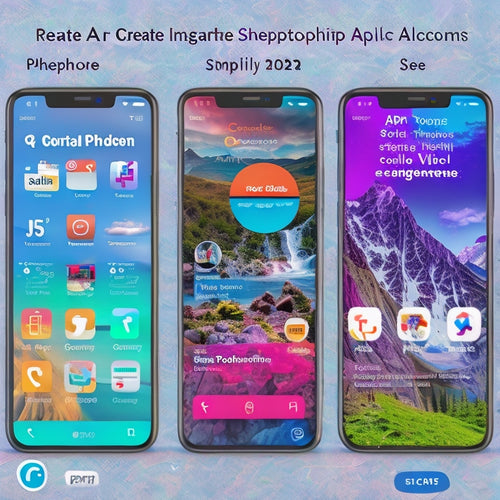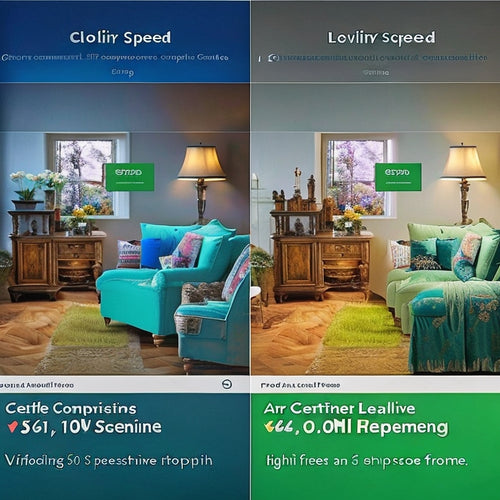
Visual Marketing Insights for Ecommerce Success
Share
To drive ecommerce success, visual marketing strategies are essential, as 75% of online shoppers consider visuals essential in the buying process. Incorporating personalized, high-quality images can influence purchasing decisions and drive conversions. Staying updated on the latest visual trends, such as bold typography and vibrant color schemes, helps create an emotional connection with customers. Measuring the impact of visual marketing is also key, with metrics like click-through rates and ROI providing valuable insights. By optimizing visual content investments and understanding category-specific imagery preferences, ecommerce businesses can refine their approach, boost sales, and revenue - and open up even more opportunities for growth.
Key Takeaways
• Incorporating personalized images in ecommerce platforms influences purchasing decisions and creates emotional connections with customers.
• Staying updated on the latest visual trends and design elements is essential to create a consistent and engaging brand presence.
• Measuring the impact of visual marketing strategies through precise metrics such as click-through rates and ROI is crucial for data-driven decisions.
• Category-specific imagery preferences must be considered to optimize visual content investments and resonate with target audiences.
• Strategic visual storytelling and creative branding are key to driving conversions, revenue growth, and brand loyalty in ecommerce.
Leveraging Personalized Visual Content
By incorporating personalized images into their marketing strategies, ecommerce retailers can greatly influence purchasing decisions, with a staggering 75% of online shoppers citing visuals as a key factor in their buying process.
This is where personalized branding and visual storytelling come into play. By using tailored visuals that resonate with their target audience, retailers can create an emotional connection, driving conversions and loyalty.
For instance, showcasing products in real-life scenarios or featuring customer testimonials can humanize the brand, making it more relatable and trustworthy.
Visual Trends and Design Elements
According to recent studies, 80% of consumers are more likely to engage with a brand that uses visually appealing and consistent design elements, making it essential for ecommerce retailers to stay on top of the latest visual trends.
To stand out in a crowded market, creative branding is key. By incorporating unique visual storytelling elements, retailers can create an emotional connection with customers, driving brand loyalty and ultimately, conversions.
From bold typography to vibrant color schemes, the right design elements can make or break a brand's online presence. By staying ahead of the curve and incorporating the latest visual trends, retailers can create a visually stunning shopping experience that resonates with their target audience.
Measuring Visual Marketing Impact
Effective visual marketing strategies rely on precise measurement and analysis to quantify their impact, ensuring data-driven decisions that drive conversions and revenue growth. To measure visual marketing impact, it's essential to track impactful metrics such as click-through rates, conversion rates, and return on investment (ROI).
By doing so, you can identify areas of improvement and optimize your visual content to maximize its effectiveness. Data-driven decisions are key to opening up the full potential of your visual marketing strategy. By leveraging metrics and analytics, you can refine your approach, allocate resources efficiently, and ultimately, boost sales and revenue.
At Vizit, we help brands and retailers measure and optimize their visual marketing impact using our AI-powered Visual Brand Performance Platform.
Category Imagery Preferences Uncovered
Across various ecommerce platforms, including Amazon, Target, and Walmart, distinct category imagery preferences emerge, revealing critical insights for brands and retailers seeking to optimize their visual marketing strategies.
A closer look at retailer comparisons and consumer preferences shows that different product categories have unique visual requirements. For instance, electronics and beauty products require high-quality, detailed images, while fashion and home goods benefit from lifestyle shots that showcase the product in use.
Optimizing Visual Content Investments
By understanding category-specific imagery preferences, ecommerce businesses can now focus on optimizing their visual content investments to maximize ROI and drive conversions.
It's time to get strategic about visual storytelling and creative branding. By leveraging data-driven insights, businesses can allocate resources more effectively, prioritizing high-performing visual content that resonates with their target audience.
At Vizit, our Visual Brand Performance Platform helps brands and retailers measure, test, and optimize their visual content investments, ensuring every image tells a story that drives sales.
With our expertise in image ranking and AI technology, businesses can reveal the full potential of their visual marketing efforts and see real results.
Frequently Asked Questions
How Do I Ensure Consistent Visual Branding Across All Ecommerce Platforms?
To maintain consistent visual branding, establish a strong brand identity and enforce design consistency across all ecommerce platforms by standardizing image templates, color palettes, and typography, resulting in a cohesive customer experience.
What Is the Ideal Balance Between Product Images and Lifestyle Shots?
"Imagine a delicate seesaw, balancing product images' informative clarity with lifestyle shots' emotional resonance. The sweet spot? 70% product images for clarity, 30% lifestyle shots for customer connection, as revealed by A/B testing, where a 2% image quality boost yields a 1.5% conversion rate increase."
Can AI Technology Fully Replace Human Designers in Visual Content Creation?
While AI technology excels in efficiency and scalability, human designers bring emotional intelligence and creativity to visual content creation, making a hybrid approach the most effective, as AI augments human capabilities, rather than replacing them.
How Often Should I Update My Visual Content to Stay Relevant?
'A staggering 75% of consumers crave fresh content daily! To stay relevant, update your visual content at least quarterly, tracking visual trends and audience engagement to guarantee maximum impact and avoid brand staleness.'
What Metrics Should I Use to Measure the ROI of Visual Marketing Efforts?
To measure ROI of visual marketing efforts, track conversion rates, engagement metrics, and conduct A/B testing to gauge effectiveness. Collect customer feedback to refine strategies, ensuring data-driven decisions that drive results.
Related Posts
-

10 Best Ecommerce Online Course Integration Services
You're looking for the best ecommerce online course integration services to take your business to the next level. You...
-

Top Social Media Apps for Shopify in 2023: Boost Your Brand's Reach and Sales
This article explores the top social media apps for Shopify in 2023 and their significance in enhancing brand reach ...
-

How Do I Optimize My Shopify Speed Score
This article aims to provide guidance on optimizing the speed score of a Shopify website. The optimization of Shopif...


